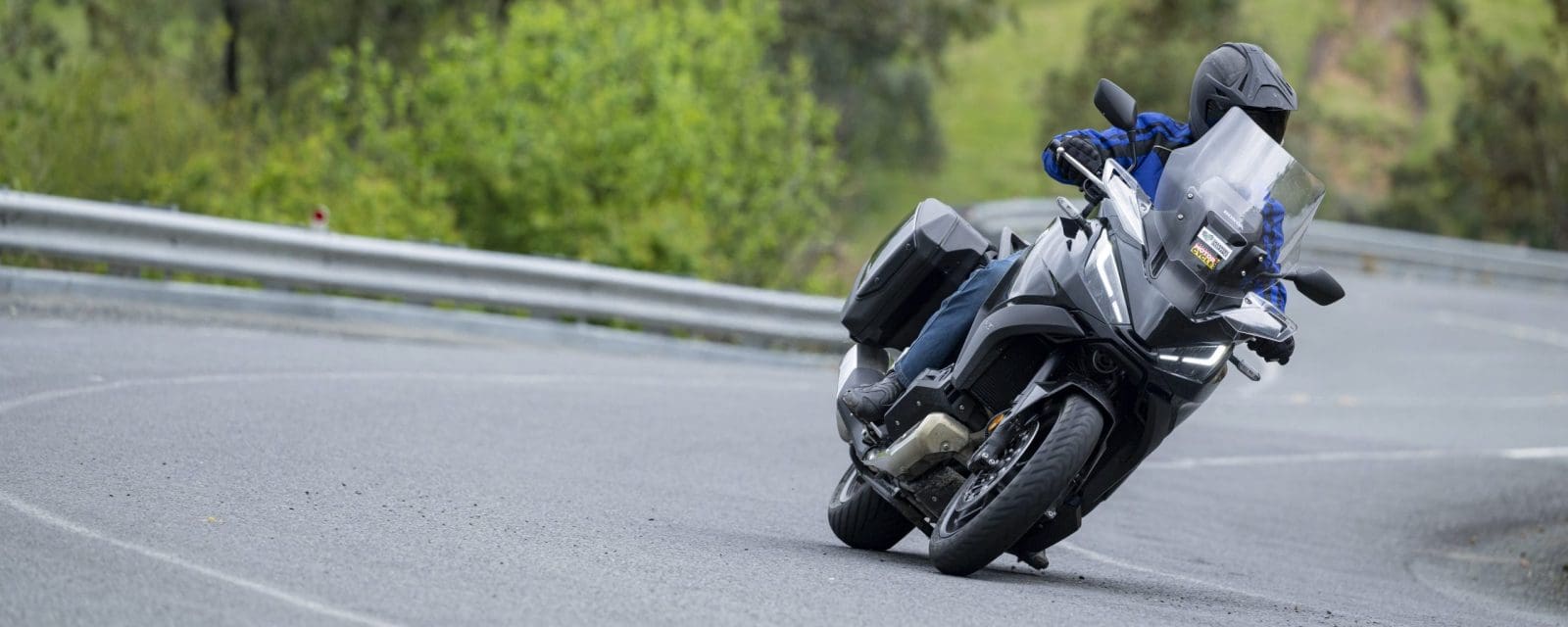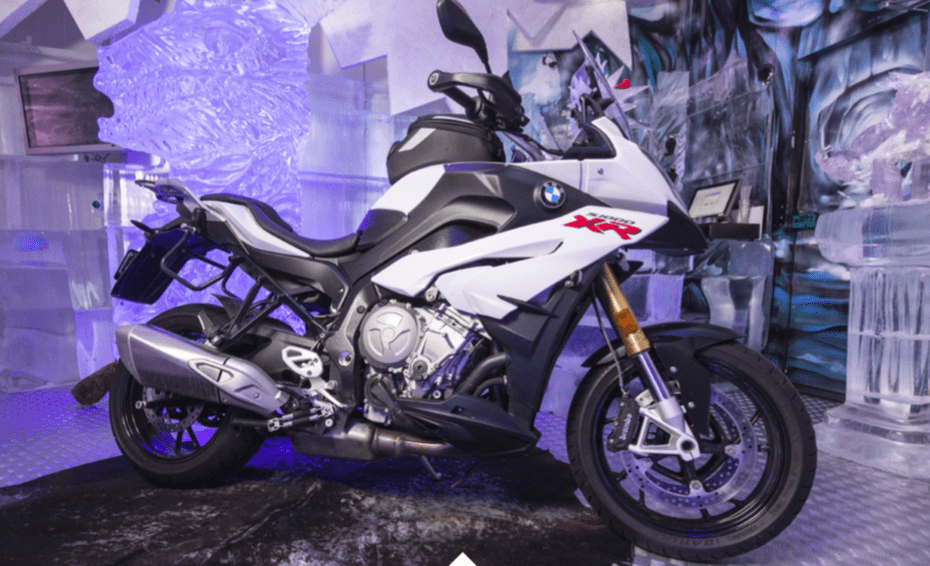Since adopting the Granturismo V4 platform in 2021, the Multistrada has come to represent the more clear-headed side of Ducati’s two-wheel output. A Multistrada Rally, for example, may have genuine off-road ability, and a Multistrada V4 S Grand Tour a world class package of state-of-the-art rider aids, but both are Multistradas at heart: engaging, versatile and efficient all-rounders. A relatively sensible choice.
The new Ducati Multistrada V4 RS, the sixth variant in the current range of V4 Multistradas, is the most powerful, at $55,800, the most expensive and, believe it or not, the most unexpected Multistrada yet.

For now, forget what you know about a Multistrada being a machine to waft you and your partner across swathes of the countryside without fuss or drama. The Ducati Multistrada V4 RS is essentially a Panigale V4 S superbike on stilts. A long-range troublemaker looking to rip it up on the racetrack and road alike. That means ditching the low-maintenance, spring-valve Granturismo V4 that has propelled the Multis so dutifully since 2021 in favour of the mighty, all-conquering animal that is the 1103cc Desmosedici Stradale. Lifted from the Streetfighter V4, it makes 132kW (180hp) – up that to 143kW (192hp) with the optional Akrapovic race system installed – and it booms and clatters and its dry clutch rattles. Everyone knows the RS is coming.
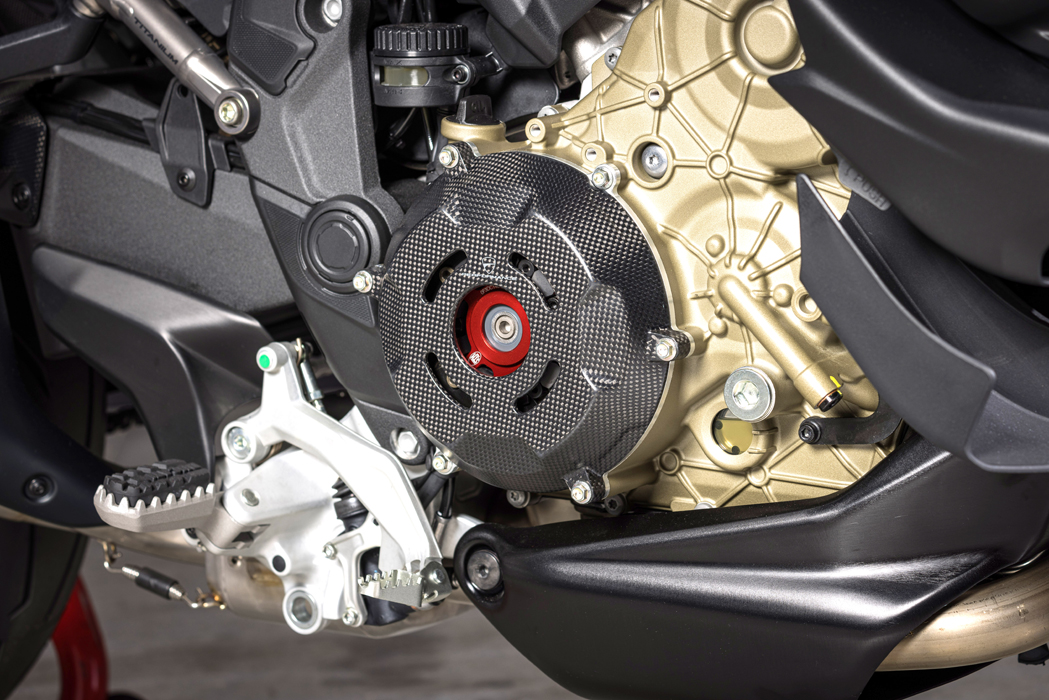
Like the V4 Pikes Peak, hitherto the sportiest of the current Multistradas, the RS runs superlight forged 17-inch Marchesini wheels instead of conventional 19-inch rims, along with new chassis geometry that sits the bike on its nose and sets it to turn like a pure sportsbike. There’s Öhlins Smart 2.0 EC semi-active suspension and, from mudguard to beak, a notable acreage of featherlight carbon bodywork.

A new aluminium monocoque frame is attached to a single-sided swingarm and light-as-a-timepiece titanium subframe. A unique livery echoes the MotoGP factory Ducatis and each bike’s production number is carried on a plate mounted on the triple clamp. Oh, and integrated panniers are also available.
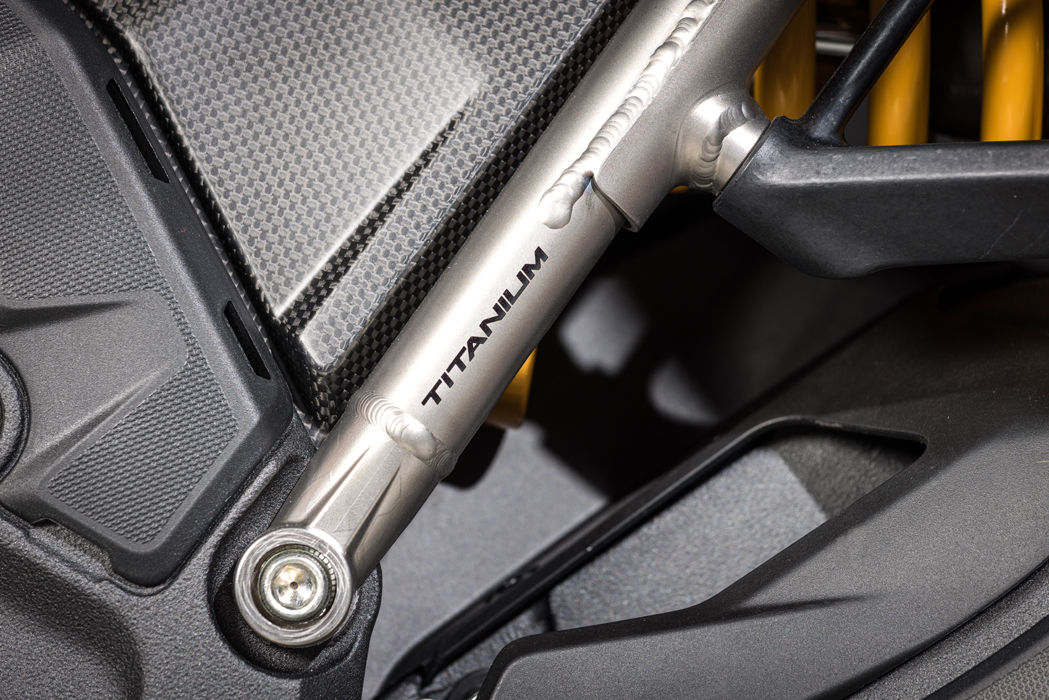
The oxymorons are compelling. ‘Trackday tourers’ that do it all have been tried before but priced close to $56k, which is $9000 above the Pikes Peak ($46,900), and billed by Ducati as the most uncompromising and exciting Multistrada yet, the pressure is certainly on the RS to deliver in an array of riding environments.
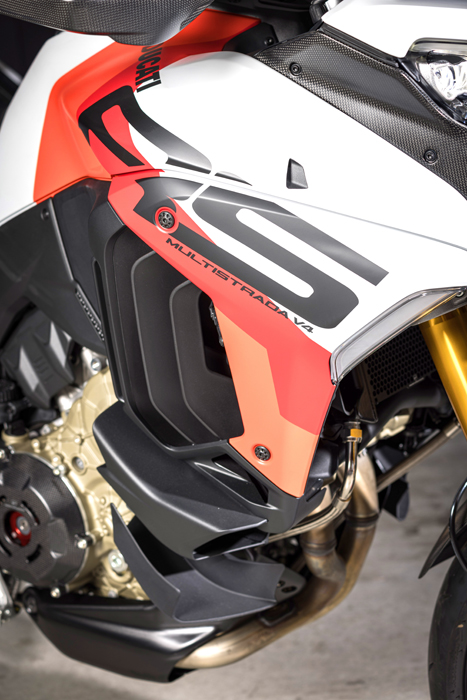
I tested the Ducati Multistrada V4 RS at the Autodromo di Modena racetrack in northern Italy, and as I accelerated up the pitlane onto the start-finish straight for the first time, the immense drive felt dramatic, possibly because of its shorter final gearing but probably because my subconscious was expecting the sharp but far less brutal acceleration of a normal Multistrada.

In a bike full of surprises, the move to a Panigale-derived Desmosedici Stradale V4 is perhaps the biggest of them all. The non-desmo 1158cc Granturismo engine makes 127kW (170hp) and 124Nm and is hardly a shrinking violet. It’s smooth at low rpm, too, and features extra wide service intervals, including a 60,000km valve check, ideally suiting the Multistrada’s high-mileage profile.

The angrier, heat churning Stradale, meanwhile, retains Ducati’s signature desmo valve system and conventional service intervals. It revs higher, while peak torque is a claimed 118Nm. On this tight and twisty racetrack, I instinctively revved it hard – the frictionless Stradale V4 makes you do this – shifting from second gear to third and fourth, then fifth gear on the straight, only when the shift lights illuminated.

This is true racebike territory. The digital tacho builds as the V4 revs with liquid fury. There’s no such thing as a slow Multistrada but when the V4 S is peaking at 10,000rpm, the new RS is still revving towards peak power at 12,250rpm and will happily continue to 13,000rpm. On paper, torque is down compared to the ‘normal’ Multi, but on track, and using just the upper 25 percent of the rev range, you don’t miss the comparative lack of grunt. Out of Modena’s final turn, with the anti-wheelie on a low setting, I could feel the front wheel hovering above the surface as the power kicked and shovelled me down the main straight.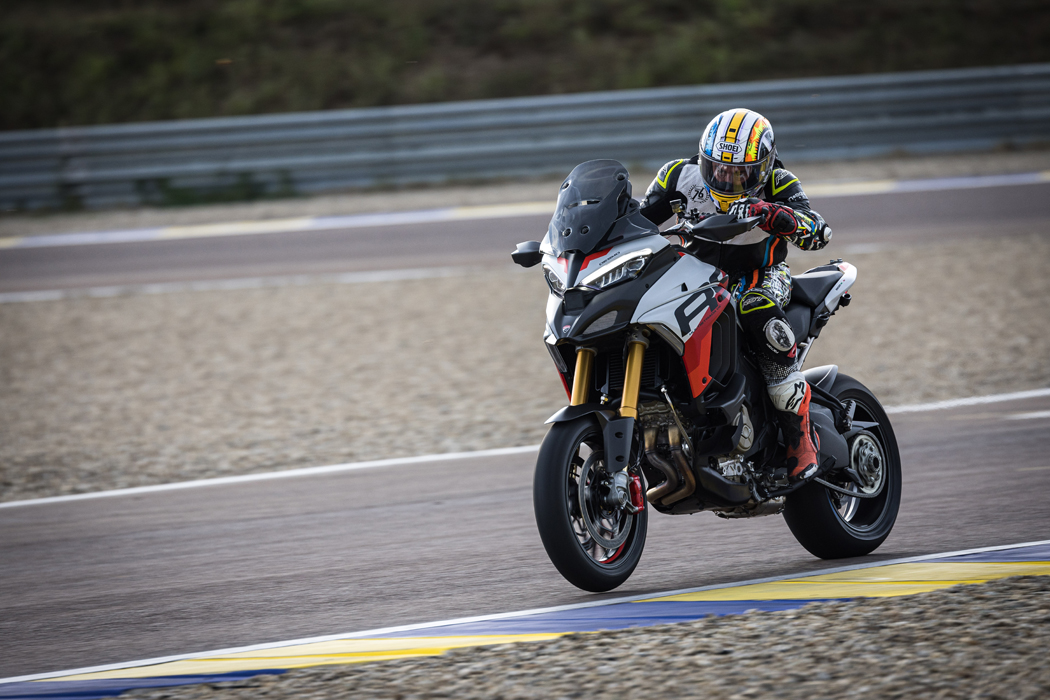
The quickshifter is perfectly slick and, this being a premium Ducati, there’s a sizeable raft of other sophisticated rider aids to help you extract the most out of its performance. There are four riding modes: Sport, Touring, Urban and a Race mode to replace the Multi’s usual Enduro setting. Each riding mode also controls the level of intervention of the lean-sensitive rider aids. Like the Panigale and Streetfighter, there are also four power modes – low, medium, high and full – and, even in the high-power mode, there is reduced torque in first, second and third gear.

Another significant change from Multistrada convention is the introduction of a 17-inch front wheel to replace the 19-incher on the standard Multi. These Marchesini rims are a sizeable 2.7kg lighter, which quickens the steering, saves on unsprung weight and can be shod with track-focused rubber. Pirelli Diablo Rosso IV Corsa are the OE fitment but our testbike wore Pirelli slicks.

Ducati isn’t revealing yet the RS’s overall weight but the introduction of that titanium subframe saves another 2.5kg. A lighter battery shaves off another 1.4kg and with the optional race exhaust installed the final figure could be close to 205kg, or a few more.
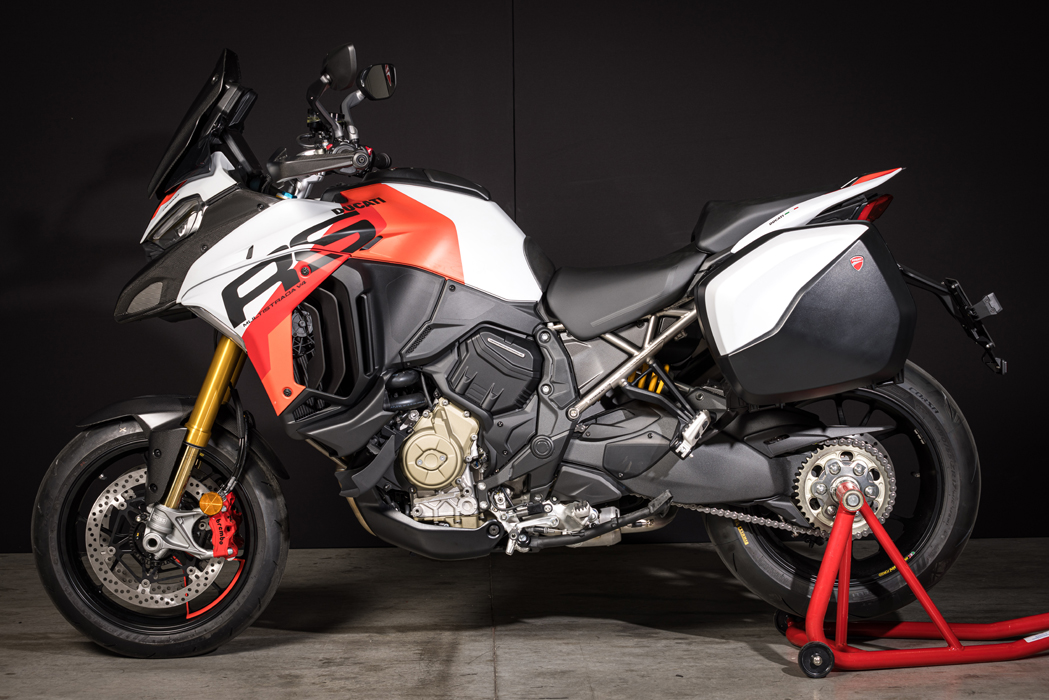
The premium Multistrada V4 S and new Grand Tour both use the familiar Skyhook Marzocchi semi-active suspension, whereas the new Ducati Multistrada V4 RS uses Öhlins Smart EC 2.0 units similar to the Panigale V4 S, Streetfighter V4 S and the Pikes Peak. Long-travel, semi-active suspension – ideal for long-distance performance, less so for the racetrack – could be seen as a red flag to sporty riders but the feel and feedback from the Öhlins units are exquisite. The RS instilled so much confidence that I turned down the traction control intervention and removed the anti-wheelie altogether. I could feel the limit approaching as if I was riding a crisply set up sportsbike.

Each riding mode changes the damping characteristics of the suspension. Sport mode will probably be the go-to option for the road, but in Race mode the suspension works immaculately on track, with far less dive on the fork and overall control mid-corner. The steering is direct and accurate – you can forget you’re riding a high-rise racer – while the feel from the front-end is so much more confidence inspiring than that generated by the normal Multistrada 19-inch front wheel. It wants to carry corner speed.

Braking is by Brembo: Stylema calipers and 330mm discs up front with a radial master cylinder and cornering ABS. These race-spec stoppers are the same as you’d find on the Multistrada V4 S and Pikes Peak, but now they are stopping less weight. On the track, they were fade free and faultless, and the high riding position and upright stance resulted in excellent stability. The cornering ABS is superb, even at a solid trackday pace.

A relatively upright and tall riding position feels a little unwieldly on track at first, but you instinctively adapt. Its stance is closest to that of the Pikes Peak, which means it should be fully comfortable for at least a couple of 22L tanks of fuel. There is an Urban riding mode that drops maximum power to 84kW (113hp) and reduces the power in all gears.

An extensive list of touring-orientated electronic rider aids and high-tech features, including radar detection, makes the RS the most advanced Multistrada ever. In fact, it’s one of the most advanced bikes on the market as it combines the racy tech of the Streetfighter and Panigale with the proven touring and distance-focused electronic wizardry of the Multistrada range. For example, you have track-focused rider aids including changeable engine brake control, and also vehicle hold control, backlit switchgear, adaptive cruise, blind-spot detection from that radar – not forgetting the Öhlins Smart EC2.0 suspension – managed via a familiar 6.5-inch TFT dash with connectivity.
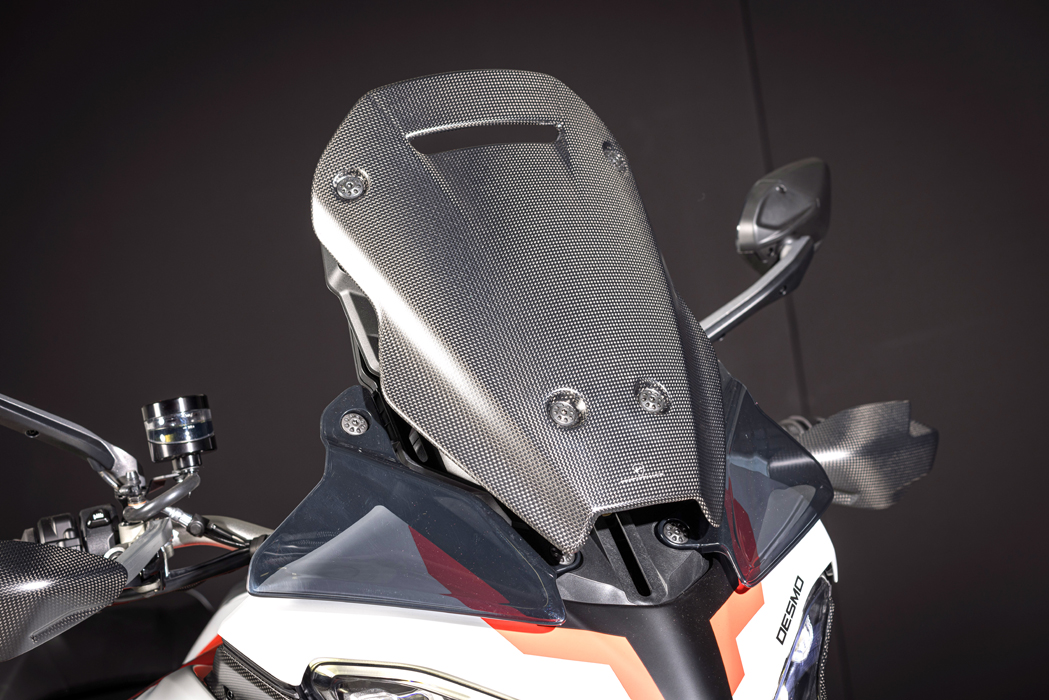
Other touches worth noting are a new heatshield, closable air deflectors and an air-cooled phone compartment, all of which were first seen on the Multi Rally.

After experiencing the Ducati Multistrada V4 RS on track, I’m eager to take it on the road to see if its touring capabilities can match its mind-blowing speed and exceptional track performance. With an engine known for its high-revving power, housed within a chassis that shares traits with the Superbike, combined with the versatility of the Multistrada, the RS seems poised to offer an intoxicating blend that ticks all the boxes.

The thought of loading it up, cruising halfway across the country to Philip Island for an exhilarating trackday is about as exciting as sports touring can get.
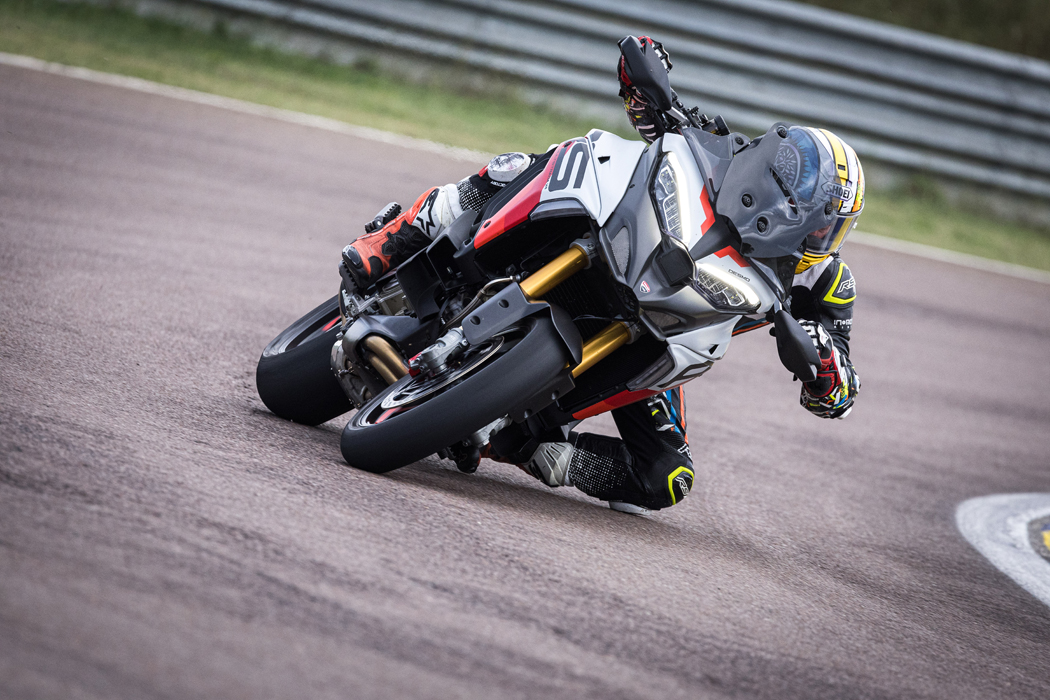
Test Adam Child + Photography Alex Photo






